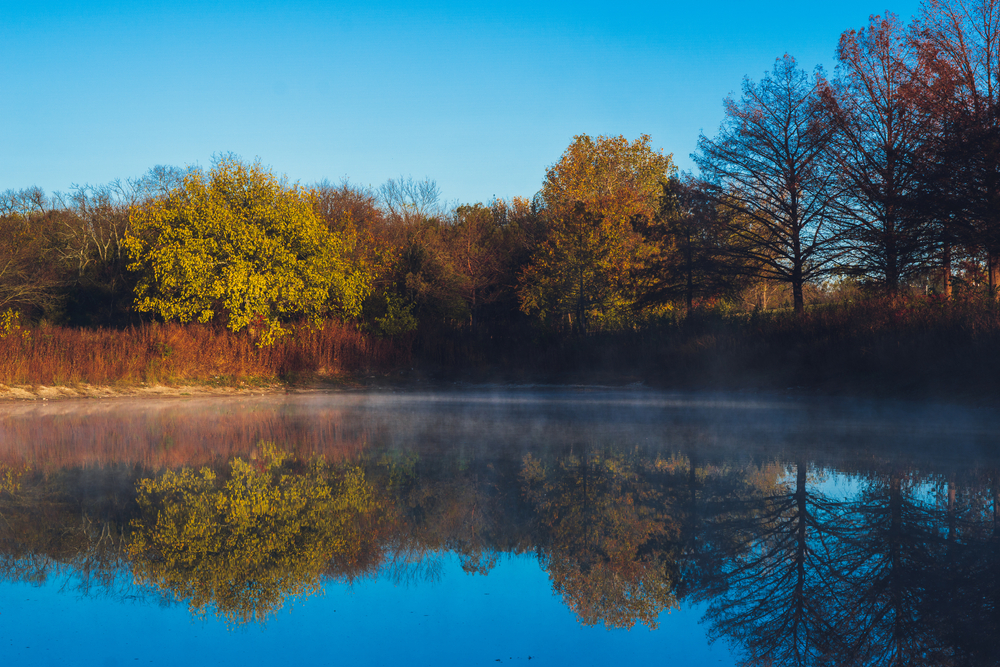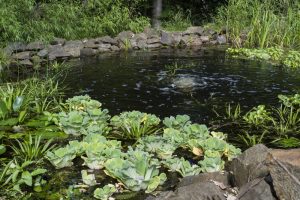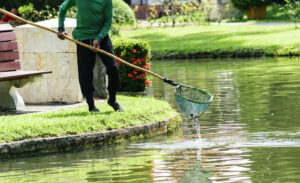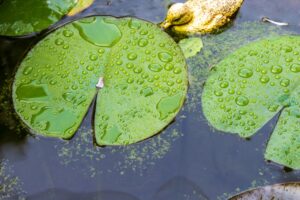A clean and healthy pond is not only a visually appealing feature of any landscape but also a crucial ecosystem that requires proper maintenance. Whether it’s a small backyard pond or a larger lake, ensuring cleanliness and water quality is essential for the well-being of aquatic life and overall environmental balance.
This is where pond-cleaning chemicals play a vital role. By effectively managing algae growth, controlling unwanted vegetation, improving water clarity, and maintaining optimal pH levels, these chemicals help preserve the natural balance and health of ponds.
In this blog post, we will explore the different types of pond-cleaning chemicals, their roles, and considerations for their safe and responsible usage. By understanding these aspects, you can make informed decisions about maintaining your pond and promoting its long-term sustainability.
Understanding Pond Cleaning Chemicals
Pond-cleaning chemicals are specifically formulated products designed to assist in the maintenance and care of ponds, lakes, and other water bodies. These chemicals are carefully developed to address common issues such as algae overgrowth, unwanted vegetation, poor water clarity, and imbalanced pH levels.
They come in various forms, including algaecides, herbicides, water clarifiers, beneficial bacteria, and pH adjusters, each serving a specific purpose in pond management. It is essential to use these chemicals properly to ensure their effectiveness and prevent any adverse effects on the pond’s ecosystem.
Using pond cleaning chemicals correctly can help maintain water quality, preserve the natural balance, and create a healthy environment for aquatic life. Proper usage includes following dosage instructions, considering environmental impacts, and seeking professional guidance when needed.
Types of Pond Cleaning Chemicals
Pond-cleaning chemicals come in different types, each designed to solve specific pond-related challenges. In this section, we will discuss the five main types of pond-cleaning chemicals: algaecides, herbicides, water clarifiers, beneficial bacteria, and pH adjusters. These chemicals help address issues like algae growth, unwanted vegetation, water clarity, and pH imbalances. By understanding these different types, you can choose the right chemicals to keep your pond clean and healthy. Let’s take a closer look at each type.
Algaecides
Algaecides are chemicals that control the growth of algae in ponds. They work by stopping the growth processes of algae, preventing them from taking over the water. Common types of algaecides include copper-based, quaternary ammonium compounds, and hydrogen peroxide-based products.
Each type has different levels of effectiveness for specific situations. When using algaecides, it’s important to follow the instructions carefully to achieve the best results and minimize any potential risks. Safety precautions, such as wearing protective clothing and keeping children and pets away, should be taken when using algaecides. By using algaecides responsibly, pond owners can effectively manage algae growth and maintain a healthy pond environment.
Herbicides
Herbicides are used to control unwanted aquatic vegetation in ponds. They help manage the growth of weeds and invasive plants that can disrupt the pond’s balance. Herbicides work by targeting and eliminating these unwanted plants, preventing them from overpowering the ecosystem.
There are different types of herbicides, such as contact and systemic herbicides, each with specific applications and effectiveness. When choosing the right herbicide, consider factors like the targeted plant species, treatment area size, and potential impacts on non-target plants and wildlife. By selecting and using herbicides carefully, pond owners can effectively control unwanted vegetation and maintain a healthier pond environment.
Water Clarifiers
Water clarifiers are products that improve the clarity of pond water. They work by binding to particles and organic matter that make the water appear cloudy or murky. This causes the particles to clump together and settle at the bottom or become large enough to be filtered out. Water clarifiers should be used according to the instructions provided by the manufacturer.
However, it’s important to note that they may have limitations depending on the severity of the issue and the underlying causes of poor water clarity. Other factors, such as excessive organic matter or specific types of algae, may require additional treatments or management strategies. Monitoring water quality and considering various factors can help determine the best approach for achieving desired results with water clarifiers.
Beneficial Bacteria
Beneficial bacteria are important for pond ecosystems and help keep them healthy. They break down waste like fish waste and decaying plants, reducing harmful substances and improving water quality. Using beneficial bacteria has many benefits, such as clearer water, less algae growth, and overall pond health.
When choosing beneficial bacteria products, consider the types of bacteria, shelf life, storage requirements, and compatibility with other pond treatments. By selecting the right beneficial bacteria and incorporating them into regular pond care, you can maintain a thriving and balanced pond environment.
pH Adjusters
Maintaining the right pH levels in ponds is crucial for a healthy ecosystem. pH adjusters help balance the water chemistry by either raising or lowering the pH. They introduce substances to increase or decrease acidity, stabilizing the pH levels.
Common types include pH increasers to raise pH and pH decreasers to lower it. The choice depends on the initial pH and desired range for the pond. By using pH adjusters properly, pond owners can create an environment that supports aquatic life and promotes overall pond health.
Considerations and Safety Tips
When using chemical pond cleaners, it’s important to consider safety and follow some guidelines. Consulting with professionals or experts can provide helpful advice. Use the recommended dosage and application methods to avoid harming the pond. Take safety precautions like wearing protective gear and ensuring proper ventilation.
Consider the potential impact on fish and other aquatic life. By following these tips and reading the product instructions, you can use chemical pond cleaners responsibly and maintain a safe and healthy pond environment.
Trust Waterline’s Cleaning Chemicals
In conclusion, using pond-cleaning chemicals is important for maintaining clean and healthy ponds. It’s crucial to use these chemicals responsibly and follow the instructions provided. If you need guidance, seek professional advice from experts in pond management. At Waterline Preservation & Management, we’re here to help. Contact us to ensure the health and sustainability of your pond.



